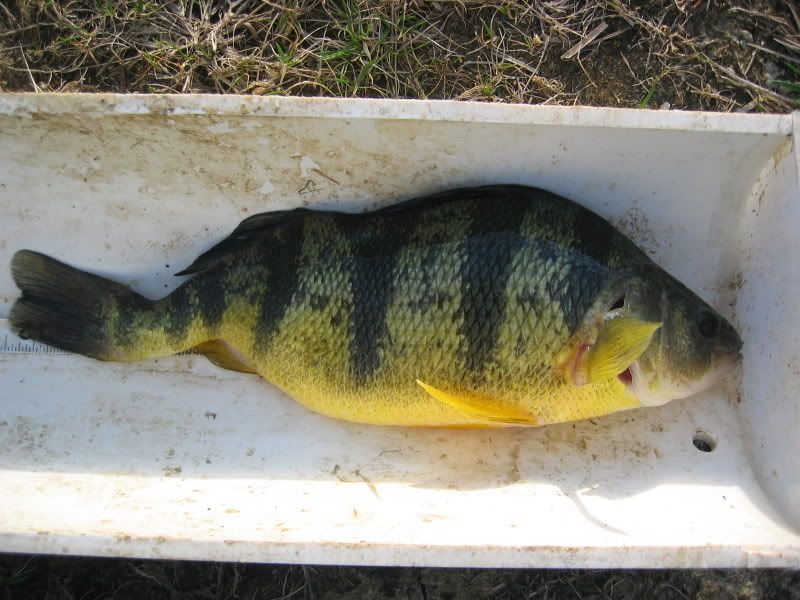 abnormal_bg_2.jpg 175.46KB
8 downloads
abnormal_bg_2.jpg 175.46KB
8 downloads
lordosis in bluegill
#1
 Guest_centrarchid_*
Guest_centrarchid_*
Posted 21 December 2009 - 11:15 AM
 abnormal_bg_2.jpg 175.46KB
8 downloads
abnormal_bg_2.jpg 175.46KB
8 downloads
#2
 Guest_CATfishTONY_*
Guest_CATfishTONY_*
Posted 21 December 2009 - 06:11 PM
is this rare?
Edited by CATfishTONY, 21 December 2009 - 06:11 PM.
#3
 Guest_centrarchid_*
Guest_centrarchid_*
Posted 21 December 2009 - 07:12 PM
#4
 Guest_az9_*
Guest_az9_*
Posted 21 December 2009 - 10:19 PM
Sometimes an entire brood can look like this. Another brood by the same parents can be completely normal. The key is the feed. Bad / old feed fed too very young fish or their mom increases the odds lordosis. Genetics can also be a factor, especially if parents are hybrids. This example resulted from bad feed.
Is this the same thing Centrarchid? I used to get a very small number of yellow perch from my supplier like this and produced a couple of them myself last year.


I also pulled a couple of perch out of the cage this year with what appeared to be a genetic anomaly known as "stump body." Unfortunately I didn't take any pictures.
Here's a genetic problem I had with a few of my largemouth bass I orginally got fro a supplier. The bottom of the jaw was pointed like the tip of a triangle.

I no longer grow out largemouth bass but I'm thinking I should use a few yellow perch from a different stock this year. The problem is I could easily get some wild fish but the possibility of bringing in fish that test positive for VHS scares me.
Edited by az9, 21 December 2009 - 10:21 PM.
#5
 Guest_az9_*
Guest_az9_*
Posted 22 December 2009 - 08:44 AM
When I said the following:
"I'm thinking I should use a few yellow perch from a different stock this year," I meant I should use some of my present stock AND some wild stock not completely replace my present stock.
Other than a few genetic anomalies health and growth is excellent, however.
#6
 Guest_centrarchid_*
Guest_centrarchid_*
Posted 22 December 2009 - 10:29 AM
The yellow perch are good examples of lordosis and scoliosis. I see such animals coming from ponds when the plankton was slow to develop or based on phytoplankton that might produce toxins or otherwise not produce vitamins needed by larvae. With white bass and sunshine bass, when the crooked back rate was high, so was the frequency of hoppers (non-inflated swim bladder).
#7
 Guest_gerald_*
Guest_gerald_*
Posted 22 December 2009 - 02:58 PM
#8
 Guest_centrarchid_*
Guest_centrarchid_*
Posted 22 December 2009 - 03:22 PM
#9
 Guest_gerald_*
Guest_gerald_*
Posted 23 December 2009 - 11:34 AM
#10
 Guest_centrarchid_*
Guest_centrarchid_*
Posted 23 December 2009 - 11:39 AM
My shiner spawning nest is right below the filter return spout, so food, poop and everything else gets blasted down into the gravel. I pour out the freshly spawned eggs into another container, then slosh & rinse a couple times to remove most of the food/dirt. Then I leave them in a shallow glass baking dish until they hatch.
So your shiner eggs are not adhesive?
#11
 Guest_gerald_*
Guest_gerald_*
Posted 23 December 2009 - 05:48 PM
So your shiner eggs are not adhesive?
1 user(s) are reading this topic
0 members, 1 guests, 0 anonymous users







